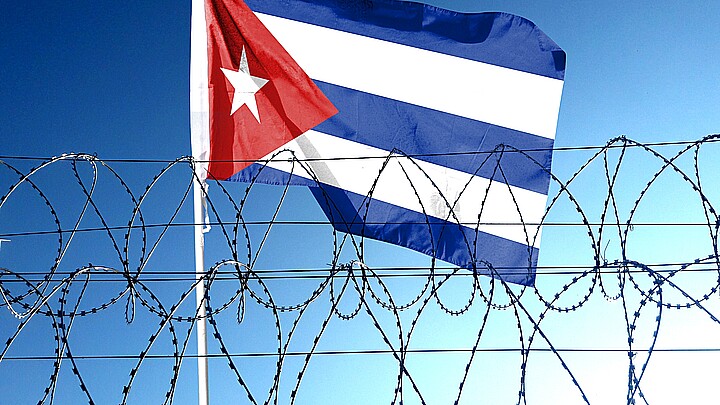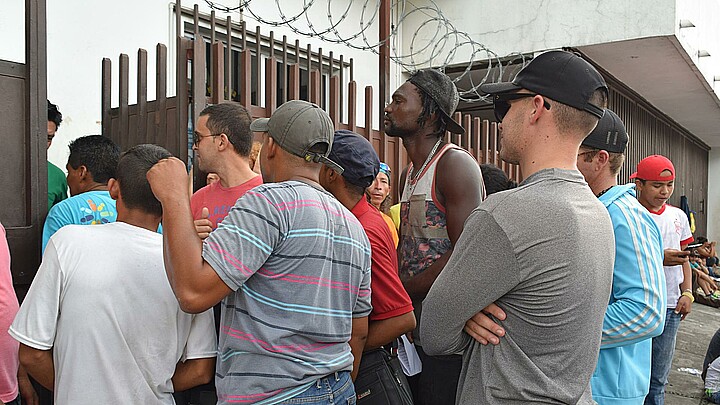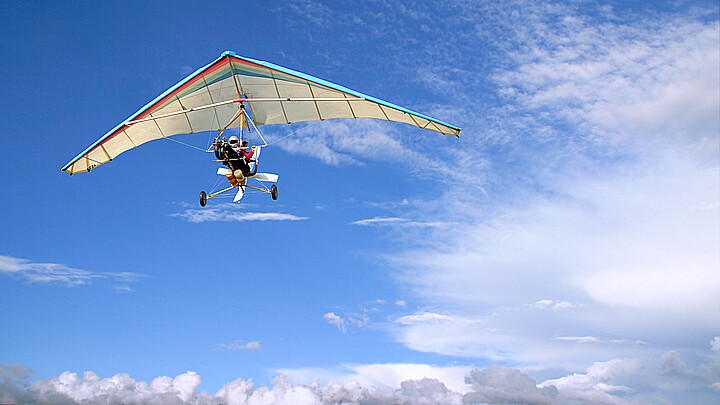Immigration
Cubans continue to make dangerous journey to Florida Keys, before and after Hurricane Ian
Cubans continue to make the dangerous journey to the Florida Keys both as Hurricane Ian made landfall farther northwest and as recovery efforts continue, local and federal law enforcement agencies report
October 12, 2022 10:22am
Updated: October 12, 2022 12:34pm
Cubans continue to make the dangerous journey to the Florida Keys both as Hurricane Ian made landfall farther northwest and as recovery efforts continue, local and federal law enforcement agencies report.
Federal agencies had been issuing warnings ahead of the hurricane, emphasizing the dangers of the roughly four-hour journey. It’s about 90 nautical miles from Havana, Cuba, to the Florida Keys.
Homeland Security Task Force Southeast issued warnings to Cubans not to make the journey to the Florida Straits, saying, “Hurricane season makes the illegal voyage across the Florida Straits even more deadly. Do not attempt the dangerous trip – you will be caught and returned.”
However, over the past two weeks, local and federal law enforcement officials have been performing search and rescue efforts after it was reported that Cubans were lost at sea after their vessels sank and survivors were apprehended after making it ashore.
Several days before the hurricane hit, U.S. Coast Guard Cutter Paul Clark’s crew repatriated 46 Cubans to Cuba.
"The USCG, partner agencies are doubling down on patrols to ensure the death toll doesn't rise as more life threatening storms develop," its captain said in a statement.
As Hurricane Ian made landfall on Sept. 28, BP agents working with Monroe County Sheriffs’ Office responded to a landing in Stock Island in the Florida Keys. Four Cubans swam ashore after their vessel sank due to inclement weather. The U.S. Coast Guard initiated a search and rescue operation and found 23 individuals.
The day before, seven Cubans were taken into custody after making landfall at Pompano Beach.
By Oct. 2, the Monroe County Sheriff’s Office announced that over a two-day period, bodies had been removed in the area of Boca Chica Key and channel, including four women and one man.
A passing mariner near the Stock Island and Boca Chica channels had found one body; on a different day, the sheriff’s office recovered others near Naval Air Station Key West. All were believed to be Cubans, the sheriff’s office said in a statement.
On Oct. 1, Homeland Security Taskforce Southeast announced that its units were patrolling by land, air and sea “to prevent illegal maritime migration.”
Its crews had been searching for 16 people who made the journey on a makeshift boat and were unaccounted for. After their vessel sunk, nine Cubans were rescued alive and two bodies were recovered.
Cubans often make the journey on poorly constructed rustic vessels often made from scraps of wood or metal, held together with straps of plastic or rope; some have makeshift motors. None are strong enough to sustain storm conditions.
Despite the warnings, Cubans continue to try and reach Florida, illegally bypassing ports of entry.
As recently as Oct. 10, U.S. Border Patrol agents working with the Monroe County Sheriff’s office responded to a landing near Marathon and apprehended 10 Cubans. They swam ashore after their vessel sank not far off the coast, the sheriff’s office said.
Just days before, BP agents working with local law enforcement officers responded to a landing in the Florida Keys and apprehended 10 Cubans. Eight were men, two were women; all were taken into custody after arriving to Key Colony Beach on a rustic vessel.
The day before, U.S. Coast Guard Cutter William Trump's crew repatriated 55 Cubans back to Cuba after four interdiction efforts off of Florida’s coast.
Different Coast Guard crews had apprehended Cubans making their way to Florida in rustic vessels located roughly 50 miles south of Boca Chica, 10 miles south of Long Key, 30 miles south of Islamorada and 40 miles south of Plantation Key.
"Hurricane season is not over and more storms are brewing," Lt. Connor Ives of Coast Guard District Seven said in a statement. "Our air and surface crews are patrolling and are on the lookout to save lives [and] prevent illegal, unsafe ventures."
So far this month, U.S. Coast Guard crews have interdicted at least 66 Cubans attempting to enter the U.S. illegally off the coast of Florida.
In fiscal 2022, U.S. Coast Guard crews interdicted a record 6,182 Cubans, up from 838 apprehended in fiscal 2021 and 49 in fiscal 2020.
The last time U.S. Coast Guard interdiction efforts were close to this high was in fiscal 2016, when they interdicted 5,396 Cubans.
During the Trump administration, interdiction efforts were lower according to Coast Guard data: in fiscal 2017, 1,468 Cubans were apprehended; in fiscal 2018, 259; in fiscal 2019, 313; in fiscal 2020, 49.
“For anyone thinking of taking part in an illegal voyage, don’t take to the sea! These voyages are extremely dangerous and your life will be at risk,” Capt. Jose E. Diaz, Coast Guard Sector San Juan commander, said in a statement.
Most Cubans entering the U.S. illegally off the coast of Florida are sent back to Cuba, according CBP and Coast Guard announcements.
The U.S. Coast Guard has published an interdiction process video online to explain the process. If those arriving illegally have family members already residing in the U.S. who have questions about possible family members interdicted at sea, they are encouraged to contact their local U.S. representative, the Coast Guard says.










